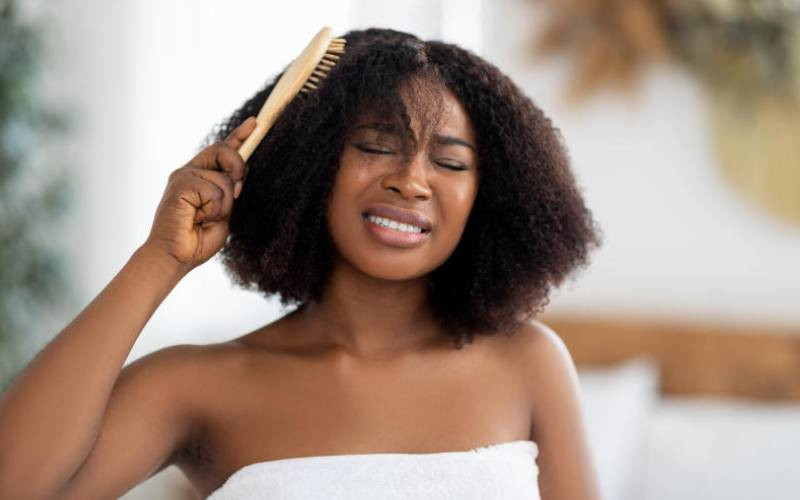
To many women, getting human hair is indeed an investment. However, it can be quite depressing when you excitedly spend so much money on some hair bundles only for it to start tangling and matting after a few days.
Just by looking at the hair closely and feeling the texture, one can sometimes tell whether it is real or fake. Some fake ones will, however, look and feel real too. So how do you tell whether your Brazilian/Peruvian etc. is genuine or not?
Burn test: Simply cut a strand of hair and put it on a burning flame. If it melts slowly into a ball instead of burning, smells like rubber and produces black smoke, it is not human hair. Human hair will immediately catch fire, burn nearly instantly curling into a little ball, and smell like burning hair. Human hair burns, synthetic melts.
Bleaching: When you bleach human hair, it lightens very fast depending on the grade. If it is fake, it will most likely burn.
Referalls: There are unscrupulous businesspeople who mix human and synthetic hair thus you need to be keen when buying. Good reviews from people you trust will also help in getting the right hair.
Texture: Human hair tends to be softer, shinier and more durable than synthetic hair since they are made from actual human hair. Feel the texture of the hair. Natural hair has each of its strands coated with scales. The hair should thus be smooth if you rub it downward, but resists and feels different if you rub it upward. Synthetic hair is smooth whichever way you rub it.
Colour: If the hair has subtle changes of color and highlights, it is most likely natural. Real hair acquires color through exposure to natural light, which is quite difficult to achieve through artificial means. If a vendor asks you what color of hair you want, then that is a sign it is not real. Human hair comes in the natural color, which is either black or brown. You can always dye it later if you want a different color.
Price: The cost of the hair can also be a huge giveaway. If it is unrealistically cheap, even if they call it a special offer, be wary. If it is real, the seller will try and get the best price for it. This, however, does not mean that you go for overpriced hair. Shop around and get the average cost.
Wave: Whether you bought it straight or curled, real human hair will always curl up when wet; it turns to its natural state. The hair should also have some motion, a ‘bounce’ to it and should not be stiff.
Tangle: Real human hair will tangle, but just a little. The longer the hair, the more likely it is to tangle especially at the back of the neck, but this should not worry you much. If the tangling is excessive, be wary.
Shedding: This too, can happen with human hair but if it is excessive, it is not genuine. Shedding should only be a few strands when you comb through. Sealing the wefts of the weave will ensure the hair stays on. Comb the weave with a wide tooth comb from the tips to the roots to reduce shedding.
 The Standard Group Plc is a multi-media organization with investments in media platforms spanning newspaper print
operations, television, radio broadcasting, digital and online services. The Standard Group is recognized as a
leading multi-media house in Kenya with a key influence in matters of national and international interest.
The Standard Group Plc is a multi-media organization with investments in media platforms spanning newspaper print
operations, television, radio broadcasting, digital and online services. The Standard Group is recognized as a
leading multi-media house in Kenya with a key influence in matters of national and international interest.



